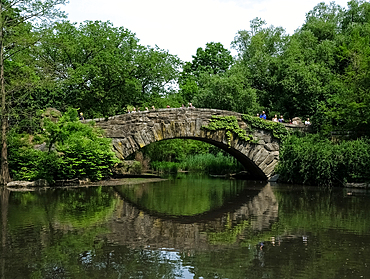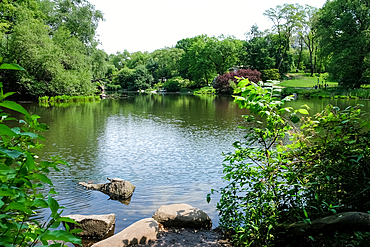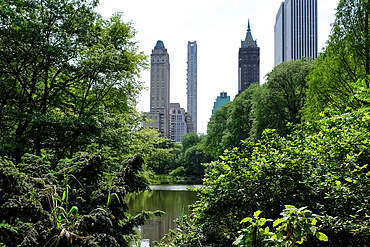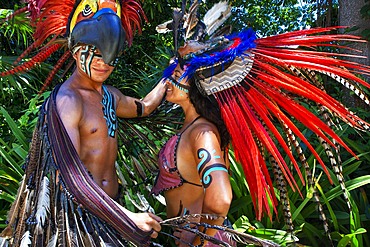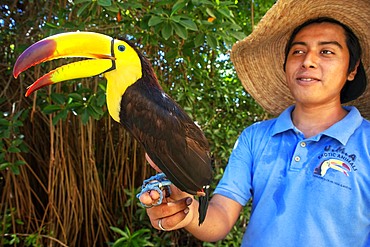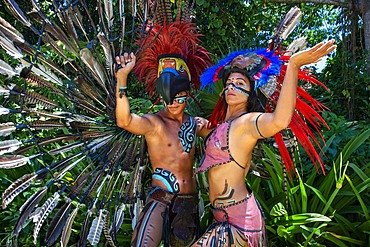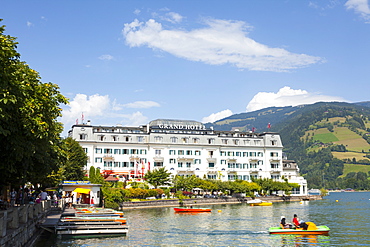Recent searches
Loading...
1384-538 - Grand Hotel in the town of Nuwara Eliya, Central Province, Sri Lanka
1278-348 - Low angle view of Grand Hotel Bucharest skyscraper with logo, under a clear blue sky, Bucharest, Romania, Europe
844-32029 - View of beach and boats in Grand Bay at golden hour, Mauritius, Indian Ocean, Africa
844-32025 - View of beach and boats in Grand Bay at golden hour, Mauritius, Indian Ocean, Africa
1373-68 - View of The Pond, one of seven bodies of water in Central Park located near Grand Army Plaza, across Central Park South from the Plaza Hotel, New York City, United States of America, North America
1373-67 - View of The Pond, one of seven bodies of water in Central Park located near Grand Army Plaza, across Central Park South from the Plaza Hotel, New York City, United States of America, North America
1373-66 - View of Manhattan cityscape as seen from The Pond, one of seven bodies of water in Central Park located near Grand Army Plaza, across Central Park South from the Plaza Hotel, New York City, United States of America, North America
1373-65 - View of The Pond, one of seven bodies of water in Central Park located near Grand Army Plaza, across Central Park South from the Plaza Hotel, New York City, United States of America, North America
1373-63 - View of Manhattan cityscape as seen from The Pond, one of seven bodies of water in Central Park located near Grand Army Plaza, across Central Park South from the Plaza Hotel, New York City, United States of America, North America
844-31439 - View of facade of the Grand Hotel di Rimini on Rimini Beach, Rimini, Emilia-Romagna, Italy, Europe
1350-6608 - Mexican aztec dress gods at Grand Palladium White Sand Resort and Spa in Riviera Maya, Yucatan Peninsula, Quintana Roo, Caribbean Coast, Mexico.
Aztec clothing was generally loose fitting and did not completely cover the body. When the Spanish arrived in Mexico, the people were surprised to see them in their full armour, with only their faces exposed.
Aztec clothes were generally made of cotton (which was imported) or ayate fiber, made from the Maguey Cactus (also called the Century Plant or American Aloe). Women would weave the fibers into clothing, a task girls were taught as young teenagers. Because of their vast trading network, the Aztecs were able to make use of a beautiful array of dyes, creating the brilliant
1350-6609 - Kayakking in front of the beach of Grand Palladium White Sand Resort and Spa in Riviera Maya, Yucatan Peninsula, Quintana Roo, Caribbean Coast, Mexico
1350-6606 - A Mexican staff member holds a tucan at Grand Palladium White Sand Resort and Spa in Riviera Maya, Yucatan Peninsula, Quintana Roo, Caribbean Coast, Mexico
1350-6602 - Aerial view of Grand Palladium White Sand Resort and Spa in Riviera Maya, Yucatan Peninsula, Quintana Roo, Caribbean Coast, Mexico
1350-6595 - Mexican aztec dress gods at Grand Palladium White Sand Resort and Spa in Riviera Maya, Yucatan Peninsula, Quintana Roo, Caribbean Coast, Mexico.
Aztec clothing was generally loose fitting and did not completely cover the body. When the Spanish arrived in Mexico, the people were surprised to see them in their full armour, with only their faces exposed.
Aztec clothes were generally made of cotton (which was imported) or ayate fiber, made from the Maguey Cactus (also called the Century Plant or American Aloe). Women would weave the fibers into clothing, a task girls were taught as young teenagers. Because of their vast trading network, the Aztecs were able to make use of a beautiful array of dyes, creating the brilliant
1160-4988 - Garden of Grand Hotel Des Iles Borromees, Stresa, Lago Maggiore, Piedmont, Italian Lakes, Italy, Europe
1104-1927 - View of South Bay, looking towards the lighthouse and Grand Hotel, Scarborough, Yorkshire, England, United Kingdom, Europe
1104-1925 - View of South Bay, looking towards the lighthouse and Grand Hotel, Scarborough, Yorkshire, England, United Kingdom, Europe
1104-1924 - View of South Bay, looking towards Grand Hotel, Scarborough, Yorkshire, England, United Kingdom, Europe
832-395826 - Aerial view, bay near Grand Port, Hotel Shangri-la le Touessrok, ile Chat, il aux Cerfs, Flacq, Mauritius, Africa
746-90167 - View of gondolas in Venice, Veneto, Italy, Europe
844-23725 - View of the facade of the Grand Hotel on a sunny day, Brighton, East Sussex, England, United Kingdom, Europe
832-390647 - Aerial view Roquebrune Cap Martin shortly after sunrise, Cap Martin with former Grand Hotel du Cap Martin, in the back Principality of Monaco, Departement Alpes-Maritimes, Region Provence-Alpes-Cote d'Azur, France, Europe
149-5228 - The Grand Hotel in Cabourg where Marcel Proust wrote 'A La Recherche du Temps Perdu', Cabourg, Normandy, France, Europe
1104-1687 - The Grand Hotel, Nuwara Eliya, Central Province, Sri Lanka, Asia
1292-1545 - The Grand Hotel, Rimini, Emilia Romagna, Italy, Europe
1292-1546 - The Grand Hotel, Rimini, Emilia Romagna, Italy, Europe
1174-7024 - 5 year old boy looking at book in hotel room as mom works on laptop, Grand Cayman, Cayman Islands
1174-7025 - 5 year old boy looking at his mother's laptop in hotel room , Grand Cayman, Cayman Islands
698-3391 - Grand Place and Brussels Hotel de Ville (Town Hall) at night, UNESCO World Heritage Site, Brussels, Belgium, Europe
832-383193 - Sodra Blasieholmshamnen boulevard, Grand Hotel, Bolinderska palatset palace, Swedish National Museum, Stockholm, Stockholms lan or Stockholm County, Sweden, Europe
450-4378 - Swimming pool at Ksar El Kabbaba, former kasbah (grand fortified house), now a hotel, Skoura, Morocco, North Africa, Africa
1113-102614 - Grand hotel Zell am See, Salzburger Land, Austria, Europe
1113-102615 - Grand hotel Zell am See, Salzburger Land, Austria, Europe
1113-102613 - view to the Grand hotel Zell am See, Salzburger Land, Austria, Europe
1292-210 - Grand Hotel, Portovenere, Liguria, Italy, Europe
776-1097 - Faded murals on the Grand Hotel, National Historic District, Butte, Montana, United States of America, North America
844-13445 - The Grand Hotel and sightseeing boats at dusk, Stockholm, Sweden, Scandinavia, Europe
746-53078 - Lounge, Grand Hotel Continental, Siena, Tuscany, Italy
746-53082 - Restaurant, Grand Hotel Continental, Siena, Tuscany, Italy
746-53086 - Interior, Grand Hotel Continental, Siena, Tuscany, Italy
746-53063 - Mallard and nuts bread, Grand Hotel Continental, Siena, Tuscany, Italy
746-53062 - Fish salad and vegetables, Grand Hotel Continental, Siena, Tuscany, Italy
746-53045 - Grand Hotel Continental, Siena, Tuscany, Italy
746-53068 - Entrance, Grand Hotel Continental, Siena, Tuscany, Italy
746-53071 - Bar and restaurant, Grand Hotel Continental, Siena, Tuscany, Italy
746-53080 - Reception, Grand Hotel Continental, Siena, Tuscany, Italy
746-53087 - Coffee cup, Grand Hotel Continental, Siena, Tuscany, Italy
1167-1359 - Colourful rowing boats under repair at the marina Borgo Marinaro, with backdrop of grand hotels, Chiaia, City of Naples, Campania, Italy, Europe
396-4988 - Melia Hotel on Kirchberg in Luxembourg City, Grand Duchy of Luxembourg, Europe
1113-90819 - View of the restaurant of the Grand Hotel Costa, Meloneras, Maspalomas, Gran Canaria, Canary Islands, Spain, Europe
1218-80 - Floating Pool at Grand Hotel Tremezzo, Lake Como, Lombardy, Italy, Europe
1218-81 - Patio at Grand Hotel Tremezzo, Lake Como, Lombardy, Italy, Europe
1212-68 - Grand Hotel Europa, Prague, Czech Republic, Europe
1113-101056 - Red Sky Rooftop Bar, Centara Grand, Bangkok, Thailand
1113-101257 - Restaurant and bar of a hotel at beach, Grand-Popo, Mono Department, Benin
746-87238 - Grand Hotel Villa Igiea, Palermo, Sicily, Italy, Europe
746-87162 - Grand Hotel Villa Igiea, Palermo, Sicily, Italy, Europe
746-87164 - Grand Hotel Villa Igiea, Palermo, Sicily, Italy, Europe
665-5477 - Gondolas, gondoliers and tourists, Hotel Bauer and palace facades on the Grand Canal, Venice, UNESCO World Heritage Site, Veneto, Italy, Europe
665-5478 - Vaporetto, Hotel Bauer, Hotel Monaco, palace facades and gondolas on the Grand Canal, Venice, UNESCO World Heritage Site, Veneto, Italy, Europe
1175-97 - Facade of The Grand hotel Steigenberger in Frankfurt, Germany
803-222 - Interior of Raffles Hotel, Singapore, Southeast Asia, Asia
800-2409 - Grand Lisboa and Wynn Hotel and Casino at dusk, Macau, China, Asia
800-2407 - Grand Lisboa and Wynn Hotel and Casino, Macau, China, Asia
800-2408 - Grand Lisboa Hotel and Casino, Macau, China, Asia
1160-2217 - Baia del Silenzio Bay, beach, Grand Hotel dei Castelli, Sestri Levante, Province of Genoa, Riviera di Levante, Liguria, Italy, Europe
1160-2218 - Baia del Silenzio Bay, old town, Chiesa di San Nicolo Church, Grand Hotel Sestri Levante, Province of Genoa, Riviera di Levante, Liguria, Italy, Europe
1167-606 - Hotel terrace with pool and view to a blue sea with passing catamaran, Cockburn Town, Grand Turk, Turks and Caicos, West Indies, Caribbean, Central America
832-370702 - Beach of the Grand Hotel Smeraldo, Porto Cervo, Sardinia, Italy, Europe
832-371985 - View of the skyline with the Oriental Pearl Tower as seen from the Grand Hyatt Hotel, Pudong, Shanghai, China, Asia
1158-410 - Grand Hotel on Lake Zell am See, Pinzgau, Salzkammergut, Austria, Europe
832-351397 - Grand Hotel, Gardone Riviera, Lake Garda, Lombardy, Italy, Europe
832-342289 - Nighttime view of Blasieholmen and the Grand Hotel in Stockholm, Sweden, Scandinavia, Europe
832-350866 - Grand Hotel Europa Prague Wenceslas Square Czech Republic
832-330418 - Electric Tatra train at the Tatranska Lomnica train station and the Grand Hotel Praha (back), Slovakia
832-325713 - 5star Superior Grand Hotel Castle Bensberg, Bergisch Gladbach-Bensberg, North Rhine-Westphalia, Germany
832-325816 - Grand Hotel Schloss Bensberg, Bergisch Gladbach-Bensberg, North Rhine-Westphalia, Germany
832-325722 - 5star Superior Grand Hotel Castle Bensberg, Bergisch Gladbach-Bensberg, North Rhine-Westphalia, Germany
832-325720 - 5star Superior Grand Hotel Castle Bensberg, Bergisch Gladbach-Bensberg, North Rhine-Westphalia, Germany
832-325714 - 5star Superior Grand Hotel Castle Bensberg, Bergisch Gladbach-Bensberg, North Rhine-Westphalia, Germany
832-323337 - Ixian Grand Hotel, Ixia, Rhodes Town, Dodecanese Islands, Greece, Europe
832-323026 - Grand Hotel, Strandvaegen, Stockholm, Sweden, Scandinavia
832-302951 - Golden lion statue in front of the MGM Grand Casino, Las Vegas Boulevard, Las Vegas, Nevada, USA, North America
832-302956 - Neon advertising, MGM Grand Hotel, Strip, Las Vegas Boulevard, Las Vegas, Nevada, USA, North America
832-302950 - Golden lion statue in front of the MGM Grand Casino, Las Vegas Boulevard, Las Vegas, Nevada, USA, North America
832-302952 - Slot machines in the casino of the MGM Grand Hotel, Strip, Las Vegas Boulevard, Las Vegas, Nevada, USA, North America
832-293742 - Lobby, JW Marriott Grand Hotel, Bucharest, Romania
832-290516 - Spiral staircase in the WestIn Grand Hotel in Berlin, Germany, Europe
832-290612 - Roof terrace at Kempinski Grand Hotel Seebad Heiligendamm in Mecklenburg West Pomerania, Germany
832-290611 - Kempinski Grand Hotel Seebad Heiligendamm in Mecklenburg West Pomerania, Germany
749-1781 - Grand Hotel des Iles Borromees, Stresa, Lake Maggiore, Piedmont, Italy, Europe
832-282061 - Union Grand hotel, Ljubljana, Slovenia
832-282050 - Union Grand hotel, Ljubljana, Slovenia
832-360187 - Lodges at the North Rim, Grand Canyon National Park, Arizona, USA
832-267318 - Grand Hotel Bellevue in Gstaad, Bernese Oberland, Switzerland, Europe
832-267310 - Grand Hotel Palace Hotel in Gstaad, Bernese Oberland, Switzerland, Europe
832-267315 - Grand Hotel Palace Hotel in Gstaad, Bernese Oberland, Switzerland, Europe
832-267313 - Grand Hotel Palace Hotel in Gstaad, Bernese Oberland, Switzerland, Europe
832-267316 - Grand Hotel Palace Hotel and Gstaad village centre, Bernese Oberland, Switzerland, Europe




